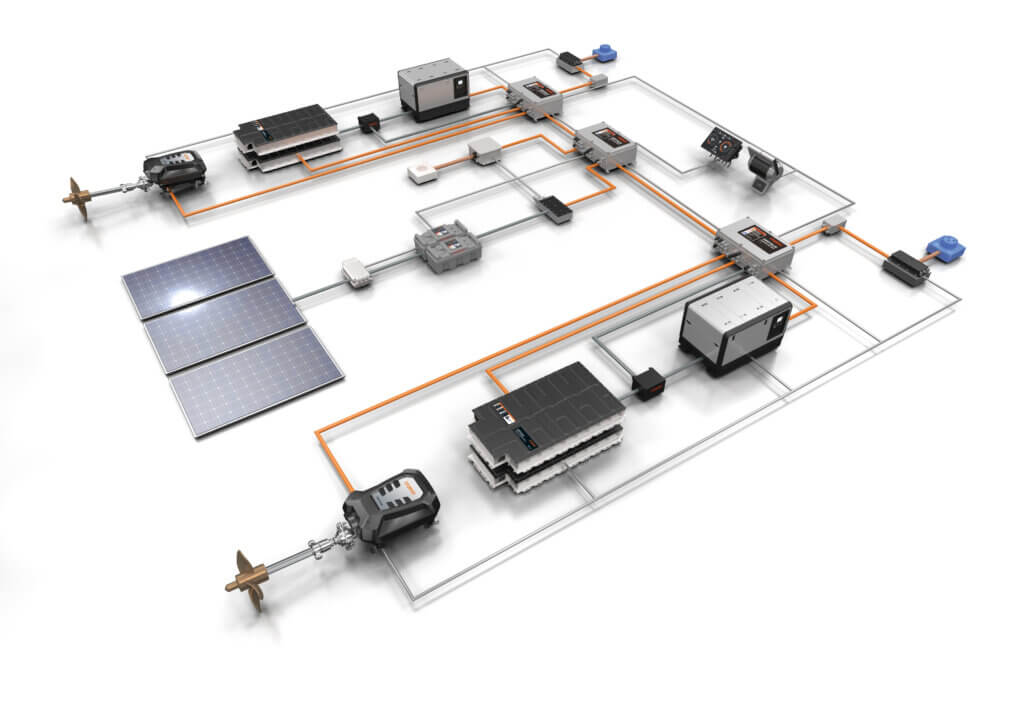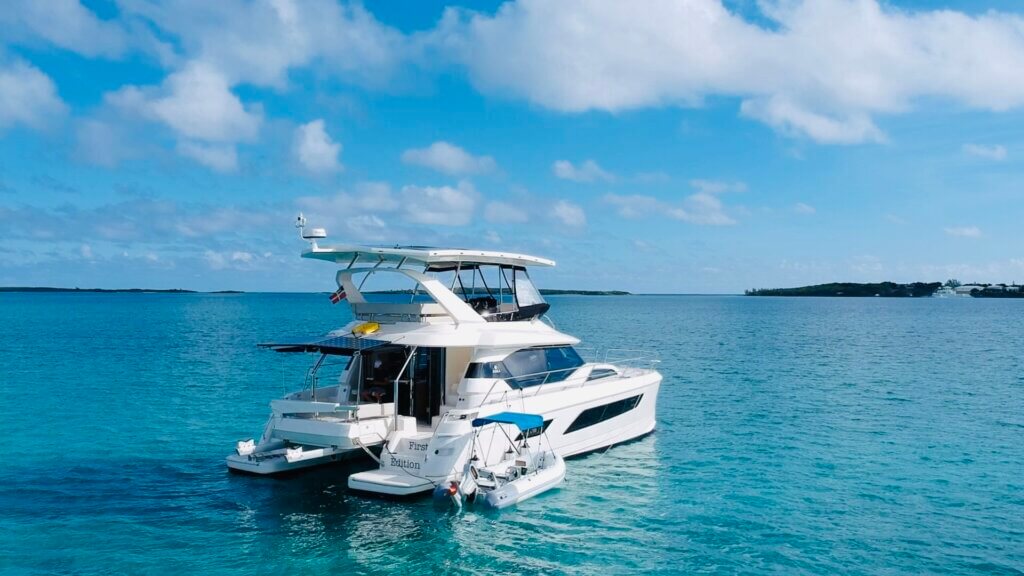The Multihull Boat Show in La Grande Motte has just concluded, an event that was originally created to present sailing and motor catamarans and trimarans on the water. To better understand the importance of this event, it’s necessary to underline the fundamental advantages that can be found from the combination of multihull ships and electric mobility.
1. Experience nature (and water) sustainably
From certain points of view, a large catamaran can be considered as an apartment, or as an islet. Its total independence is given by the possibility of not having to frequently resort to docking in the port. In fact, thanks to the power of the wind and the sun, it’s possible to obtain an excellent level of independence in the water, while respecting the surrounding environment.
Let’s think, for example, of the Ocean Explorer 72, a high-tech catamaran that relies on a Torqeedo Deep Blue Hybrid electric propulsion and energy management system. It has two 100 kW Deep Blue electric motors which are powered by four Deep Blue batteries. This offers the ability to explore the open waters while generating green, renewable energy with 4kW solar panels and hydrogeneration – so there’s no need to rely on generators. In short, it’s like being in front of a small eco power plant at sea that offers hours of long navigation, comfort, and multimedia systems.
2. Space, speed, and light double
If we think of catamarans, we naturally notice 2 things compared to traditional sailing yachts: the deck surface is larger, and they are 20-30% faster. They offer excellent comfort, ideal for anyone who likes to relax in the sun, but also in practical terms of energy management. The size of catamarans makes it possible to install wind turbines and solar panels by taking advantage of a much larger area. In fact, let’s consider that it’s possible to rely on 20-50m² to generate 10-20 kW from solar panels on sunny days.

One of the best examples of these 3 qualities is certainly the Excess 15 by Groupe Beneteau, with Torqeedo ZF sail drive and Torqeedo’s Deep Blue Hybrid system. This latest energy management system allows to monitor in real time the solar and water energy that is generated at any moment during navigation.
This high-tech catamaran is efficient, lean, and sustainable, capable of cruising at higher speeds. But that’s not all! Thanks to the sailing propeller it manages to generate up to 5 kW per hour compared to a fast-sailing yacht, and almost 100 W per hour at only 5 knots.
3. Functional dimensions
On a structural level, in terms of size and shape, next to an electric catamaran you not only notice its high speed, but also the absence of noise. Yes, because this means of water transport presents itself as a product of pure modern architecture, light and above all capable of being functional in many respects.
In this case we call into question the TimeSquare 20 day-cruiser from the motorboat manufacturer Frauscher. It’s a 20m² vessel with a double hull design capable of reducing the area of the boat in contact with the water, thus also reducing resistance during navigation.
It has two Torqeedo Cruise 12.0 engines that can take this catamaran (measuring 8.30 meters by 2.50 wide) up to a speed of 26 km/h. It has an overall range of up to 110 km at 10 km/h.
Its biggest advantage? Its lightness, also given by its shape, which allows to make the most of the electric propulsion system, given that less power is required to start the boat.
4. Intuitive management and control
Behind the catamarans mentioned so far, to better explain the advantages associated with electric mobility, we find Torqeedo. Its solutions, which are chosen by various water transport manufacturers, offer perfect stability and manoeuvrability. In the first case we are certainly talking about a feature that particularly concerns the comfort of those on board the catamaran.
It’s time to mention the Aquila 44, a new 44-foot multihull boat, capable of reacting in a stable and optimal way to all sea conditions. The two engines chosen for the catamaran are the Deep Blue engines and a series of 5.6 kWp solar panels. During navigation, maneuvers are easy and the risk of heeling is limited.

The Aquila 44 also relies on solar panels which supply up to an average of 20 kW per day, energy which is sufficient to operate the air conditioning without worrying too much about consumption.
5. Development is always in motion
When we think of long voyages it is necessary that the yacht, the operating system and the crew are well synchronized. This level of perfect balance already arises from the development phase of a project. The automated systems, the technological batteries, the smart materials used are just some of the many aspects that are taken into consideration.

For example, bluewater electric catamarans like the OE72 are born from tests and research to optimize its systems and find new materials. The same goes for products such as the Deep Blue Hybrid, a ready-to-use and customizable solution, or the automatic hydrogeneration mode of Torqeedo electric engines.
The coming months, the coming years, will be very important to leverage these advantages in order to introduce new ones with a series of latest generation innovations, which will make water transport increasingly sustainable and efficient.


